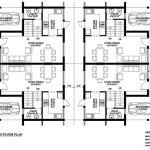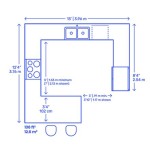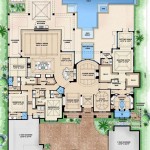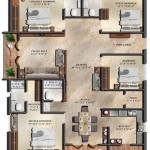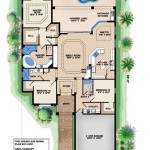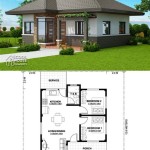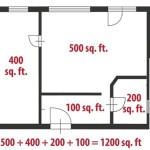Dog Crate DIY Plans: A Comprehensive Guide
Building a dog crate can be a rewarding project for pet owners seeking a customized and potentially cost-effective solution for their canine companion. This guide offers insights into planning and executing a successful DIY dog crate project, covering important factors like material selection, measurements, and construction techniques.
Material Selection and Preparation
Choosing the right materials is crucial for building a safe and durable dog crate. Common options include wood, metal, and PVC. Wood offers aesthetic appeal and can be easily customized but requires more maintenance and may not be suitable for strong chewers. Metal is robust and long-lasting but can be more challenging to work with and may require specialized tools. PVC is lightweight, affordable, and easy to assemble but may not be as sturdy as wood or metal. Select materials based on the dog's size, temperament, and chewing habits. Ensure all materials are non-toxic and pet-safe.
Before beginning construction, gather all necessary tools and materials. This may include saws, drills, screws, fasteners, sandpaper, measuring tape, and safety equipment like gloves and eye protection. Having everything readily available streamlines the building process and reduces the risk of errors.
Accurate Measurements and Design Considerations
Precise measurements are essential for a comfortable and functional dog crate. The crate's dimensions should allow the dog enough space to stand, turn around, and lie down comfortably without feeling cramped. Measure the dog's length from nose to tail, height from the ground to the top of the head (while standing), and width at the widest point (usually the shoulders). Add a few inches to each measurement to ensure adequate space. Consider the dog's anticipated growth if it's a puppy.
The crate's design should prioritize ventilation and visibility. Incorporate gaps or openings in the sides and back for proper airflow, ensuring the spacing is safe and prevents the dog from escaping or getting stuck. Avoid solid walls that restrict air circulation and can create a sense of confinement. Choose a design that allows the dog to see its surroundings, promoting a sense of security and reducing anxiety.
Step-by-Step Construction and Assembly
Begin by cutting the chosen material according to the planned dimensions. Follow the chosen design plan carefully, ensuring accurate cuts and angles. If using wood, sand all edges smooth to prevent splinters and injuries to the dog. For metal crates, use appropriate welding techniques to securely join pieces.
Assemble the crate frame, ensuring all joints are strong and stable. Use appropriate fasteners, such as screws or bolts, depending on the material. Reinforce corners and stress points for added durability. Attach the sides and back panels, leaving the front open for the door. If desired, create a removable tray for easy cleaning.
Construct the door using a frame that fits snugly within the crate opening. Attach hinges to allow the door to swing open and closed smoothly. Install a secure latch or lock mechanism to prevent the dog from escaping. Ensure the latch is easy for the owner to operate but difficult for the dog to manipulate.
Finishing Touches and Safety Considerations
Once the crate is assembled, inspect it thoroughly for any sharp edges, protruding screws, or potential hazards. Sand down any rough spots and ensure all fasteners are securely in place. If using wood, consider applying a non-toxic sealant or paint to protect the wood and enhance its appearance. Ensure any finish used is pet-safe and allows for proper ventilation.
Introduce the dog to the crate gradually and positively. Avoid forcing the dog into the crate, as this can create negative associations. Place comfortable bedding and familiar toys inside to make the crate a welcoming space. Reward the dog with treats and praise for entering and staying calmly inside the crate. Never use the crate as a punishment.
Choosing the Right Crate Type
Different dog breeds and individual personalities may necessitate different crate types. A wire crate offers maximum visibility and ventilation, often preferred by anxious dogs. Plastic crates are lightweight and portable, ideal for travel. Heavy-duty metal crates provide superior security for strong or escape-prone dogs. Consider the dog’s specific needs and lifestyle when selecting a crate type to build.
By carefully considering materials, measurements, and construction techniques, building a DIY dog crate can be a cost-effective and personalized way to provide a safe and comfortable space for a beloved canine companion.

Diy Plans For Large Double Dog Kennel Crate Furniture

Large Wood Pet Kennel End Table Ana White

Medium Dog Kennel Diy Plans Crate Furniture Digital

Diy Dog Crate How To Build A Kreg Tool

Diy Plans Large Single Dog Kennel Digital Lit Chien Mobilier Pour Meubles Caisse De

Diy Dog Crate Plans Cage Build Plan Wooden House Kennel

15 Diy Dog Crate Table Plans You Can Make Today With Pictures Dogster

Diy Plans For Large Single Dog Kennel Crate Furniture

Pallet Board Dog Kennel Crate Build Heartwood Art

Dog Kennel Building Plans And Diy Runs
Related Posts

